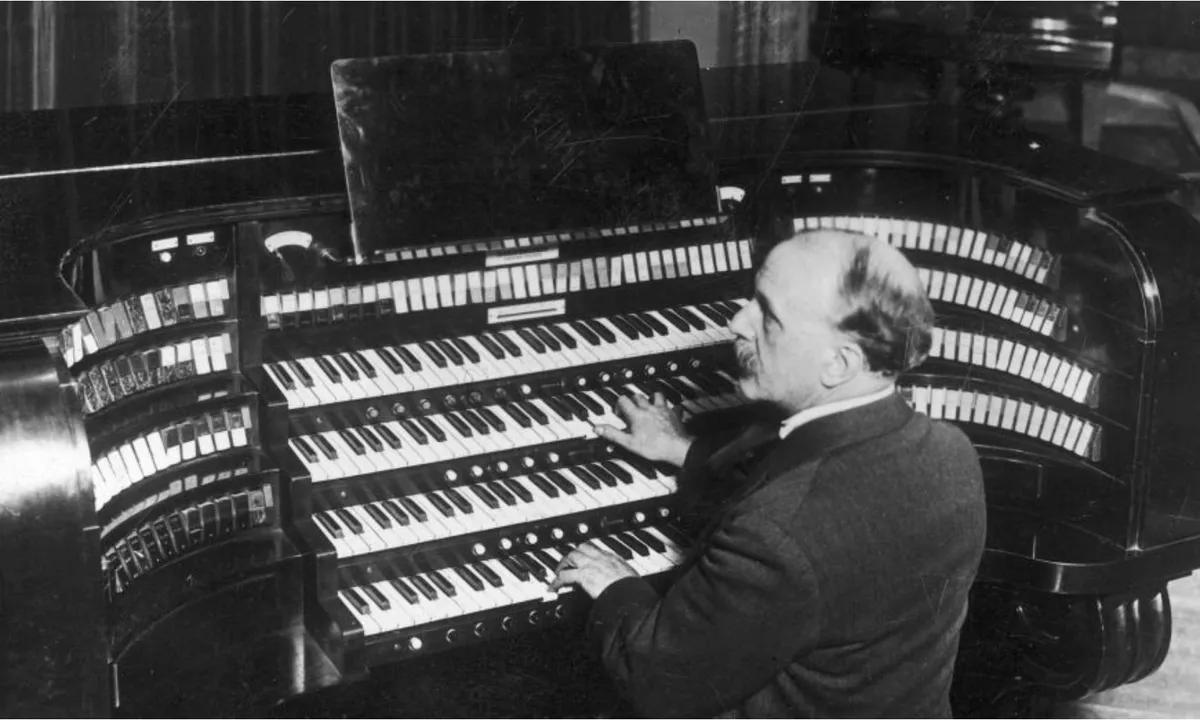By the time the French musician Louis Vierne arrived in England for a short recital tour in January 1924, he was already a well-known figure. Titular organist at Notre-Dame Cathedral in Paris since 1900, Vierne was also a celebrated composer, with four organ symphonies and a clutch of other pieces to his credit.
One of the recitals Vierne played in England was at Westminster Cathedral in London, where a new organ was being built in stages. Its designer, Henry Willis III, was at the concert and at one point he apparently hummed a tune to Vierne – who, severely sight-impaired since birth, would have been unable to read it on paper – and waited for the master organist to weave an imposing improvisation on it.
The tune Willis provided was that of the so-called ‘Westminster Quarters’, a four-note sequence struck in various permutations to mark the quarter hours on Big Ben, the clock in the Elizabeth Tower at the Houses of Parliament. The Quarters had actually originated not in London, but as a peal written in 1793 for St Mary the Great, the university church in Cambridge.

Exactly who composed the chime is uncertain, though it’s often attributed to William Crotch, an undergraduate at the time. Some hear in the initial four-note motif an echo of the aria ‘I know that my redeemer liveth’ from Handel’s Messiah, but the link is not conclusive.
We have no record of how Vierne expanded on the Quarters theme at his Westminster Cathedral concert. But its potential clearly interested him, as eight years earlier he had asked the owner of a clock shop in Switzerland where he heard the chime to write it down for him. And three years after the 1924 recital, Vierne returned to the Quarters again, in a swirlingly flamboyant work entitled Carillon de Westminster.
The Carillon is a relatively short piece, but packs a large variety of colour and incident into its six-minute span. In it, Vierne gradually builds an imposing edifice of sound from the four basic “Westminster Quarters” motifs (including, for some reason, a slightly misquoted second “quarter”), drawing on the massive tonal and technical resources of the French symphonic organ tradition.
The full-throated roar of the Carillon’s conclusion is a classic moment in organ literature, with a searing bevy of reed stops, swell effects and deep-set pedal notes conspiring to thrill the listener.
The Carillon de Westminster certainly impressed the first audience that heard it, at the conclusion of a Forty Hours service in Notre-Dame Cathedral on 29 November, 1929. When devotions were over, Vierne began playing the Carillon, expecting those present to leave the building.
Instead, ‘it was one of the rare times when I saw the clergy and faithful not sortie’, wrote one of Vierne’s students. ‘Everyone, to the great desperation of the vergers and sacristans “who had never seen anything like it”, waited quietly until the end, and a number of people improvised a little ovation for the maître when he came down from the tribune.’
Further performances of the Carillon quickly followed, and it became widely popular. Vierne dedicated the published score ‘to my friend Henry Willis, organ builder in London’, and played it at the inauguration of the restored Notre-Dame organ in 1932.
He died there five years later while performing his 1,750th recital, his foot landing on the low E pedal which continued to resonate until his body was shifted. Over 3,000 audience members were present, and prayers were said as they were told the shocking news of Vierne’s passing.
Top image: a painting of the Houses of Parliament in 19th century London by John Macvicar Anderson (1835-1915). Photo by Getty Images